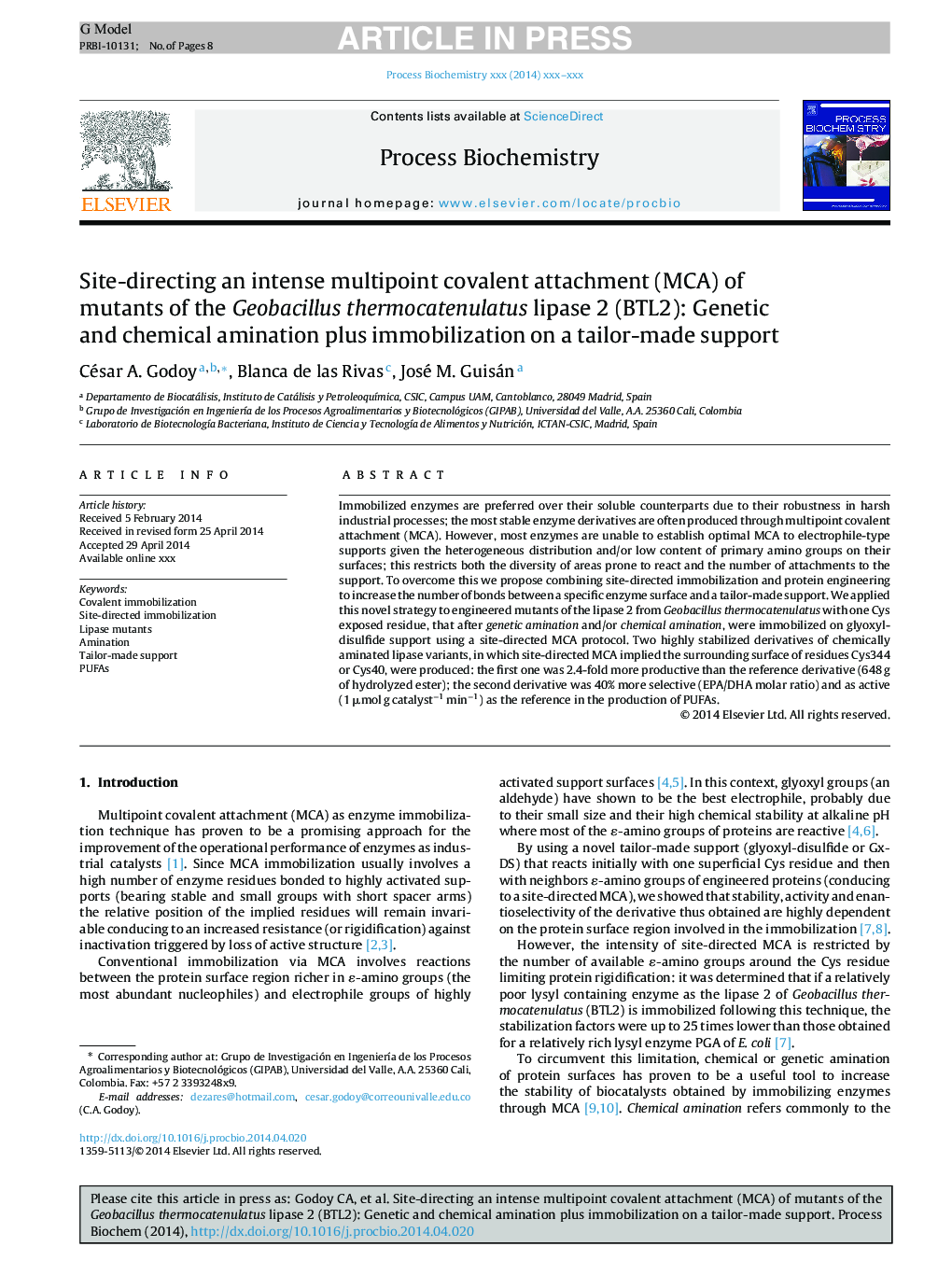| Article ID | Journal | Published Year | Pages | File Type |
|---|---|---|---|---|
| 10235406 | Process Biochemistry | 2014 | 8 Pages |
Abstract
Immobilized enzymes are preferred over their soluble counterparts due to their robustness in harsh industrial processes; the most stable enzyme derivatives are often produced through multipoint covalent attachment (MCA). However, most enzymes are unable to establish optimal MCA to electrophile-type supports given the heterogeneous distribution and/or low content of primary amino groups on their surfaces; this restricts both the diversity of areas prone to react and the number of attachments to the support. To overcome this we propose combining site-directed immobilization and protein engineering to increase the number of bonds between a specific enzyme surface and a tailor-made support. We applied this novel strategy to engineered mutants of the lipase 2 from Geobacillus thermocatenulatus with one Cys exposed residue, that after genetic amination and/or chemical amination, were immobilized on glyoxyl-disulfide support using a site-directed MCA protocol. Two highly stabilized derivatives of chemically aminated lipase variants, in which site-directed MCA implied the surrounding surface of residues Cys344 or Cys40, were produced: the first one was 2.4-fold more productive than the reference derivative (648 g of hydrolyzed ester); the second derivative was 40% more selective (EPA/DHA molar ratio) and as active (1 μmol g catalystâ1 minâ1) as the reference in the production of PUFAs.
Related Topics
Physical Sciences and Engineering
Chemical Engineering
Bioengineering
Authors
César A. Godoy, Blanca de las Rivas, José M. Guisán,
